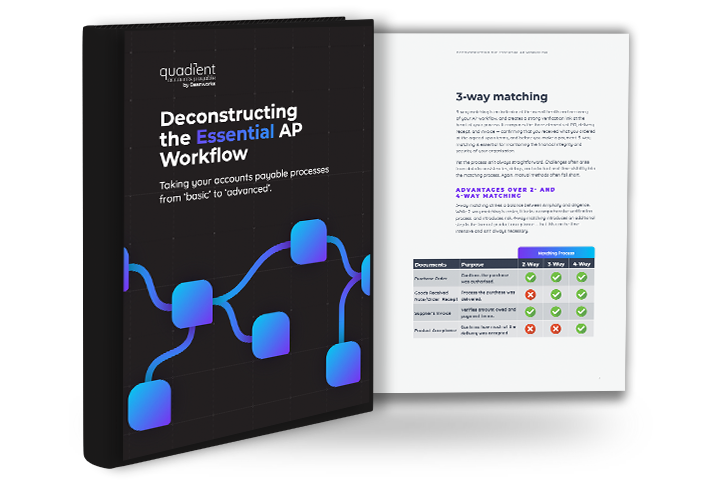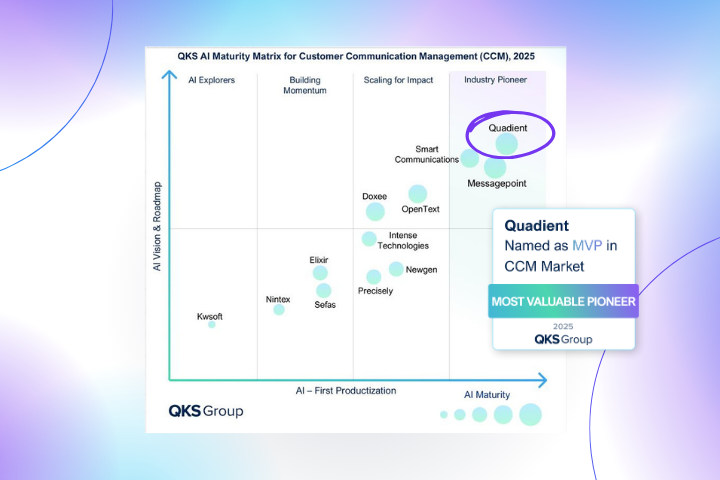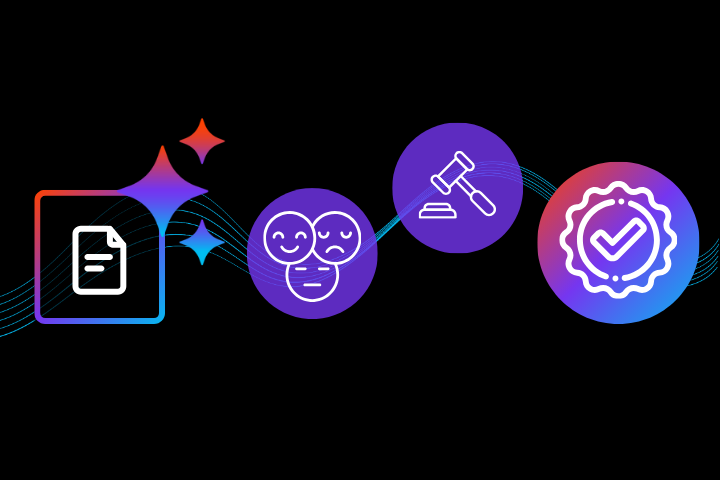
8 benefits of accounts payable workflow automation
Is your accounting team empowered to do their best work from wherever, whenever? As remote finance teams are increasingly asked to do achieve with less, it’s important that your answer is a resounding “yes”. But in fact, only 10% of businesses currently have a fully-automated AP solution — which means they’re missing a key ingredient in their accounting team’s success.
In this blog, we’ll explore 8 key benefits of accounts payable automation, and explain how each one helps your finance team do their best work.
Featured Resource: Master the Accounts Payable Workflow

Download Your Free eBook
What is accounts payable (AP) automation?
AP automation is a digital solution designed to reduce repetitive manual tasks, such as data entry and writing checks. With automation, companies can submit invoices electronically, manage approvals, and process payments via a single, unified cloud-based platform. AP automation is often used to achieve the following goals:
- Eliminate data entry
- Enable online approvals
- Generate digital audit trails
- Automatically match invoices to POs and payments
- Enable secure end-to-end payments
- Reduce errors such as duplicate payments and incorrect invoice keying
Not only will AP automation free teams from repetitive, tedious, manual tasks, it will also reduce an organization’s risk of fraud, thanks to additional insights and oversights at every step of the AP workflow. Furthermore, they can also easily integrate your existing systems such as Sage, Quickbooks, Netsuite, or other AP software with their existing accounting systems and sync vendors, GL, tax payments, etc.
Let’s explore the 8 key benefits an AP automation solution like Quadient Accounts Payable Automation by Beanworks provides.
8 key benefits of AP automation
1. Time savings
AP automation significantly reduces the time required to process an invoice. Payables are automatically routed to the right team member according to customized workflows — quickly and without manual intervention. You won’t have to spend another second searching for an invoice or hunting down where it is in the approval process.
2. Cost savings

Manual invoice processing can cost up to $15 per invoice, compared to $5 or less with AP automation. Automation reduces invoice processing costs by such a substantial amount because it helps eliminate 83% of the manual data entry required to process an invoice, while accelerating other processes such as payments and PO matching. It also reduces the difficult to quantify but no less significant costs of document storage, postage, and more.
3. Improved collaboration
AP automation allows as many people as necessary to collaborate on any particular payable in real-time. No matter where they are, any stakeholder can simultaneously access financial documents to confirm or dispute charges, seek clarification, or explain discrepancies — all at the click of a button.
4. Reduced accounting risk
Automation provides visibility into the approvals and payments workflows. This helps avoid common AP risks, such as manual data entry errors, false billing, and duplicate or lost payments. AP automation also helps illuminate fraudulent transactions or potential red flags before it’s too late to intervene, including falsified invoices, phishing scams, duplicate payments, unapproved vendors, expense fraud, and other suspicious activities.
5. Digital audit trails
Digital invoicing really shines when it’s time for an audit. Electronic audit trails make invoice tracking a breeze, from receipt to payment. You can search for invoices by vendor, GL code, amount, legal entity, or any other information on the invoice, and track its progress through your workflows at a glance.
6. Customizable workflows
AP automation lets you customize your accounts payable process to suit your company’s needs. You can create invoice routing based on threshold amounts or specific approval workflows, create and maintain approval timelines, balance AP staff workloads, and cross-check and validate payables against your own accounting system tables.
7. Cloud-based data storage
A cloud-based AP automation solution gives users access to the AP system from anywhere. Information is centralized on a single platform, enabling real-time reporting for anyone with the designated access — increasing productivity and collaboration.
8. Full visibility into the AP workflow
An automated accounts payable system provides the kind of control that’s impossible to achieve with paper-based workflows. AP automation clearly shows where every invoice is, the status of payments and approvals, and virtually anything else you might need to know. This enhanced visibility also gives you valuable insight into how efficiently your processes are working, and how you can continue to fine-tune your payables from end-to-end.
Choosing a robust AP automation solution
Quadient’s fully-automated AP solution is the key to empowering your accounting team. You’ll increase productivity and collaboration while gaining visibility into your processes and reducing your risk of fraud.
Featured Resource: Master the Accounts Payable Workflow
When you’re ready to invest in Quadient AP to automate your AP workflows,we're here to help. Book a demo today!








